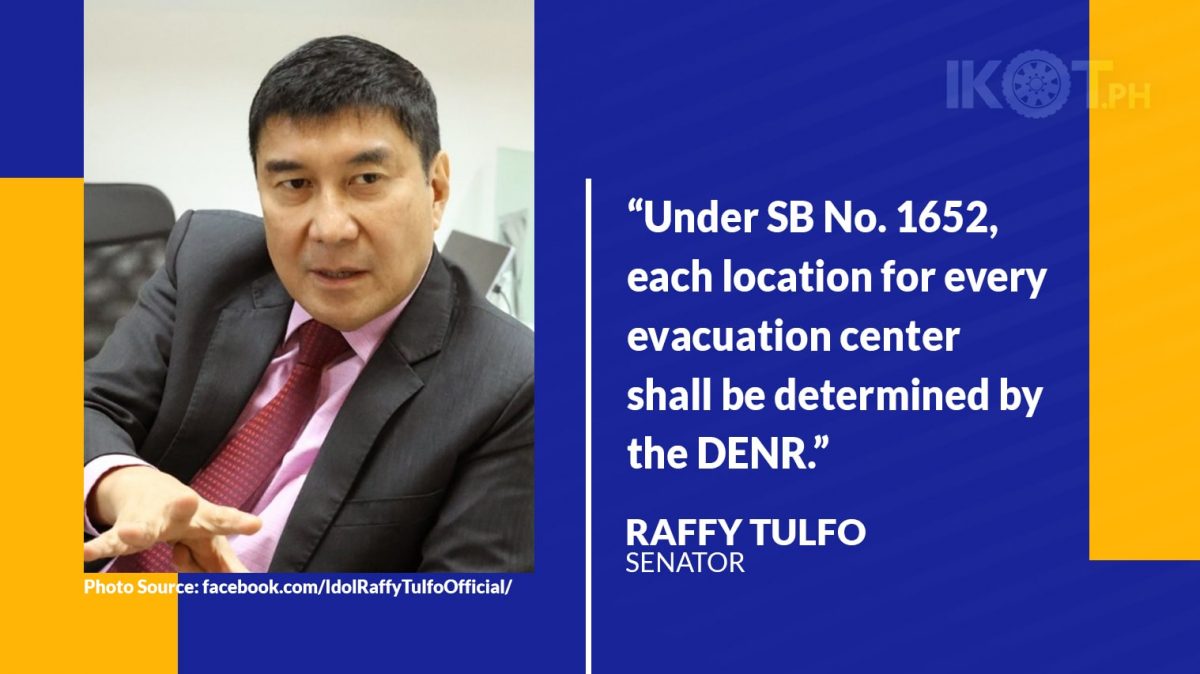Senator Idol Raffy Tulfo filed a measure seeking to establish well-equipped evacuation centers in all 1,488 municipalities and 146 cities in the country.
In filing Senate Bill (SB) No. 1652, Tulfo underscored the need for evacuation centers that have basic facilities, accessible location and adequate emergency supplies, such as water, medicine and relief goods considering that the Philippines is one of the most typhoon-prone countries in the world.
“When disaster and calamities strike, covered courts, gymnasiums, schools, and even churches serve as evacuation areas to shelter affected residents and families,” the bill’s explanatory note read.
“These areas are jam-packed when the situation worsens. Diseases; existing and unforeseen, may also spread because these areas do not meet standard measures for a proper and well-ventilated evacuation center,” it added.
“Approximately 19-20 typhoons enter the Philippine Area of Responsibility annually, with 7-9 reaching landfall.”
Notably, approximately 19-20 typhoons enter the Philippine Area of Responsibility annually, with 7-9 reaching landfall, according to Climate Change Knowledge Portal for Development Practitioners and Policy Makers.
Under SB No. 1652, each location for every evacuation center shall be determined by the Department of Environment and Natural Resources (DENR), in close coordination with the LGUs concerned.
The said location must be centrally located in the community, must be of a safe distance from large trees and structures with hazardous materials, must be near a health facility, must be located on geotechnically stable land, must not be located near military base camps and camps of insurgent groups.
Its structure must also be calamity-resilient and built with sturdy materials, and must have the capacity to accommodate a large number of evacuees.
“The LGUs concerned shall be primarily responsible for the operation, supervision, and management of evacuation centers.”
The legislator from Isabela and Davao also proposed that under said bill, the LGUs concerned shall be primarily responsible for the operation, supervision, and management of evacuation centers.
The local sanggunian, meanwhile, shall promulgate guidelines and procedures for the use and operation of the evacuation center under its jurisdiction.


